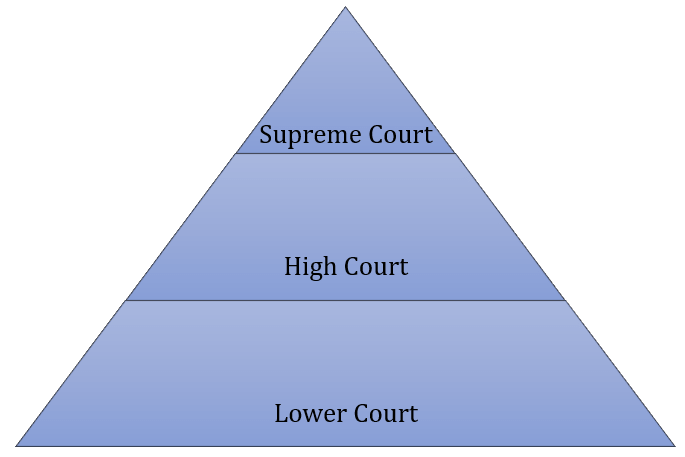NCERT Solutions for Class 8 Social Science Civics Chapter 4 Judiciary contain solutions to the exercises given in the Civics book Social and Political Life. These answers have been explained in a manner that you will easily understand all the concepts and get your doubts cleared without even seeking anyone’s assistance. You can read and download all the questions and answers in PDF format.
Class 8 Civics Chapter 4 Judiciary NCERT Textbook Questions Solved
Question 1: You read that one of the main functions of the judiciary is ‘upholding the law and Enforcing Fundamental Rights’. Why do you think an independent judiciary is necessary to carry out this important function?
Answer: An independent judiciary is necessary for upholding the law and enforcing fundamental rights. It ensures that the courts can operate without bias or influence of the legislature and the executive. An independent judiciary makes sure that the government treats everyone fairly and respects their rights. Independent judiciary keeps the government from having too much power and makes sure that all citizens are treated equally under the law. This way it upholds democracy and the constitutional rights of the citizens.
Question 2: Re-read the list of Fundamental Rights provided in Chapter 1. Why do you think the Right to Constitutional Remedies is connected to the idea of judicial review?
Answer: The Right to Constitutional Remedies is closely connected to the idea of judicial review. It allows citizens to approach the courts if they believe their rights have been violated. Judicial review is the process by which courts examine the actions of the government or other public bodies to ensure they comply with the Constitution. This right essentially acts as a safeguard, enabling individuals to challenge laws or actions that infringe upon their constitutional rights. It ensures that the government remains within its legal boundaries and respects the fundamental rights guaranteed by the Constitution.
Question 3: In the following illustration, fill in each tier with the judgments given by the various courts in the Sudha Goel case. Check your responses with others in class.

Answer: Lower Court (Trial Court): Laxman, his mother Shakuntala and his brother-in-law Subhash Chandra were sentenced to death
High Court: Laxman, Shakuntala and Subhash Chandra were acquitted.
Supreme Court: Laxman, and Shakuntala were given life imprisonment while Subhash Chandra was acquitted for lack of sufficient evidence.
Question 4: Keeping the Sudha Goel case in mind, tick the sentences that are true and correct the ones that are false.
(a) The accused took the case to the High Court because they were unhappy with the decision of the Trial Court.
Answer: True
(b) They went to the High Court after the Supreme Court had given its decision.
Answer: False.
They cannot go to the High Court after the Supreme Court has given its verdict or decision. They went to the High Court after the Trial Court had given its decision.
(c) If they do not like the Supreme Court verdict, the accused can go back again to the Trial Court.
Answer: False.
If they do not like the Supreme Court verdict, the accused cannot go back again to the Trial Court since the Supreme Court is at the highest rung of the judiciary pyramid.
Question 5: Why do you think the introduction of Public Interest Litigation (PIL) in the 1980s is a significant step in ensuring access to justice for all?
Answer: The introduction of Public Interest Litigation (PIL) in the 1980s is significant because it made it easier for people, especially the poor and marginalized, to access justice. Before PIL, individuals could only file cases if they were directly affected. PIL allows anyone to go to court for issues that affect the public, like pollution, human rights, and corruption. This change has enabled more people to seek justice for societal issues, making the legal system more accessible and responsive to the needs of all citizens.
Question 6: Re-read excerpts from the judgment on the Olga Tellis vs Bombay Municipal Corporation case. Now write in your own words what the judges meant when they said that the Right to Livelihood was part of the Right to Life.
Answer: In the Olga Tellis vs. Bombay Municipal Corporation case, the judges stated that the Right to Livelihood was part of the Right to Life because no person can live without the means of living, that is, the means of livelihood. In the Olga Tellis vs. BMC case, people were poor and lived in slums. For them, the eviction of their slum means deprivation of their livelihood which consequently means deprivation of life. This is how the judges connected the Right to Livelihood to the Right to Life.